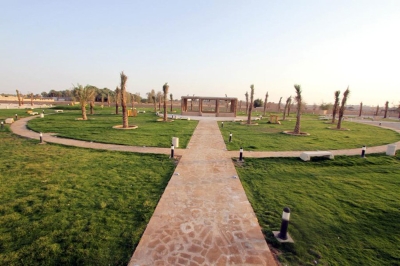
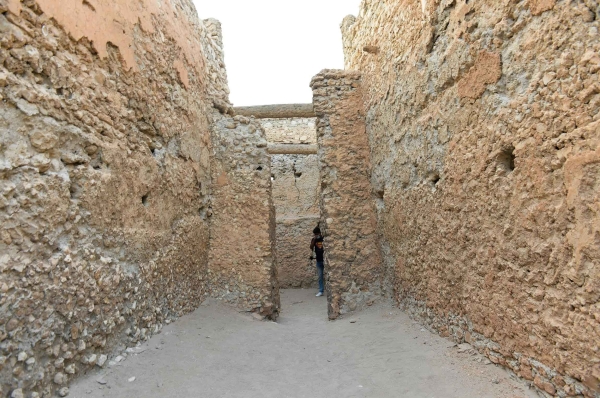
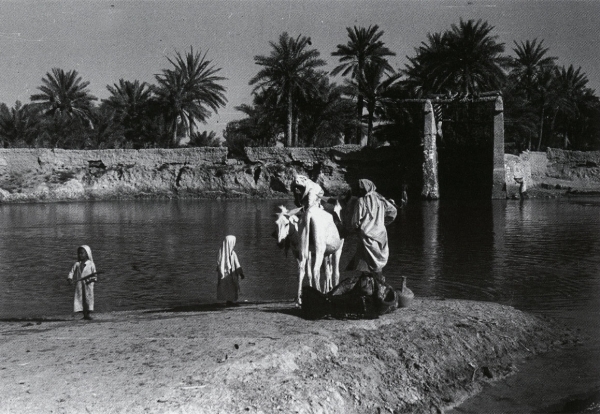
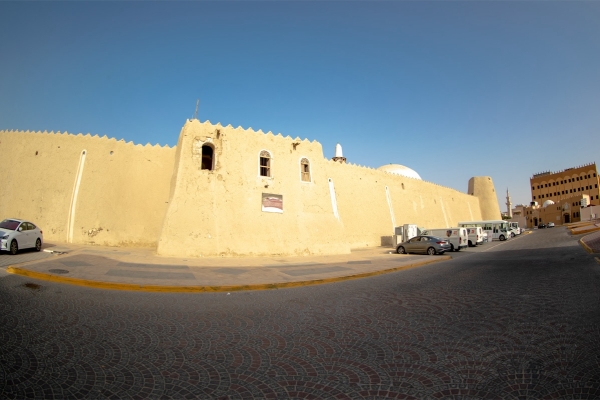
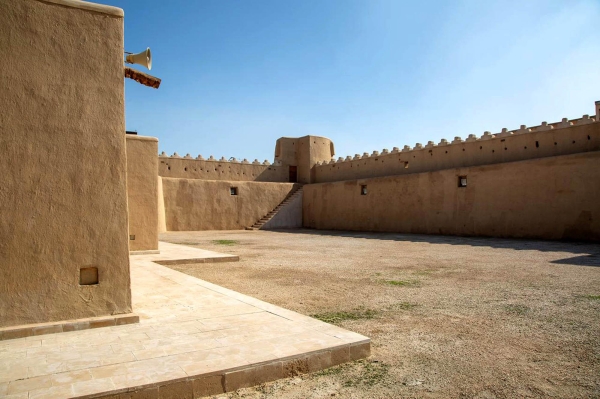
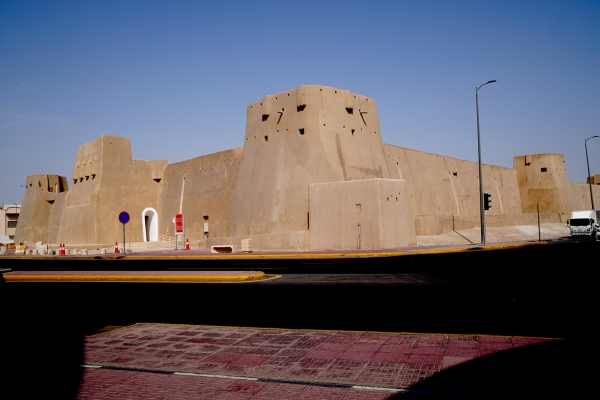
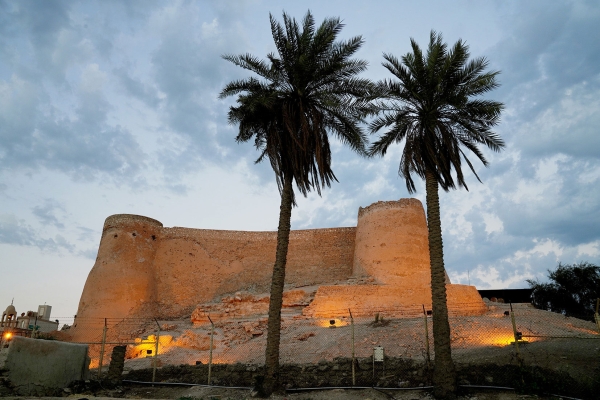
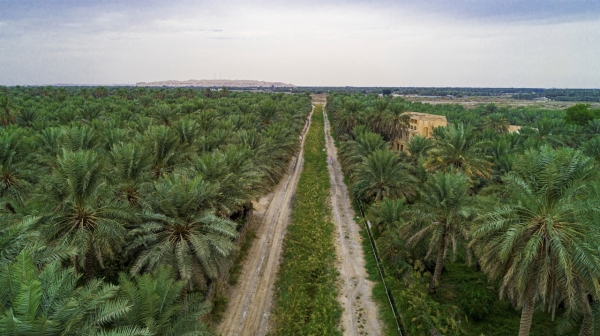
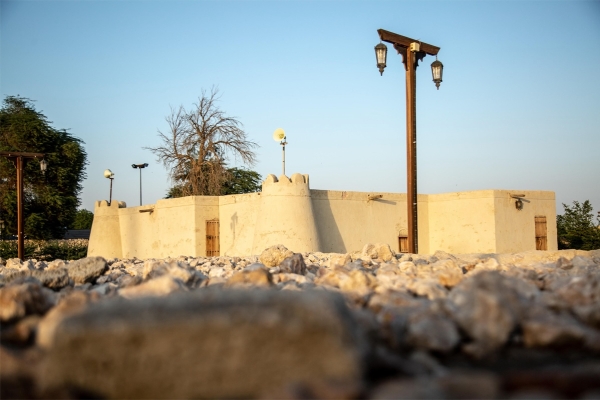
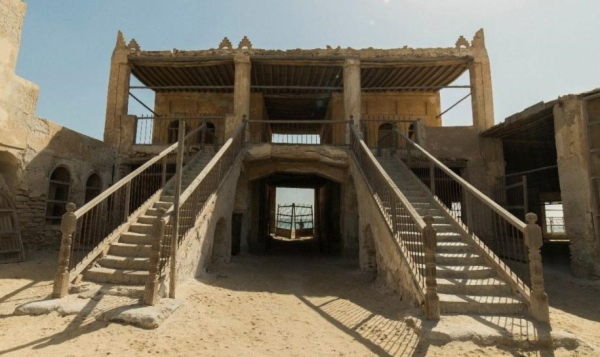
Antiquities in the Eastern Province refer to the tangible remnants and legacies of ancient human civilizations in the Eastern Province of the Kingdom of Saudi Arabia. It includes the antiquities of Thaj Archaeological Town, a significant archaeological site east of the Kingdom, and one of the historical Arab kingdoms that dates back to the pre-Islamic era.
The Jawatha Mosque in al-Ahsa Governorate dates back to the early Islamic era, as it was built in 628. To the mosque's southwest are the remains of a graveyard believed to contain the tombs of some companions of the Prophet who were martyred during the Ridda Wars.
Stone Age antiquities
- The Empty Quarter Desert: Known in ancient times as "Rimal Wabar," it is one of the ancient human settlements in the Eastern Province, and its oldest archaeological remains date back to the Early Paleolithic period, between 75,000 and two hundred thousand years BCE. Its remains include a scattered group of stone tools of the Acheulean industry type, found in two sites: Quwaynisah "Bin Adayan" and another near Jabal Abu Makhroq. During the middle period of the Early Paleolithic period, it was settled by human groups concentrated around the Yabrin Oasis and ad-Dubtiyyah.
- Yabrin Oasis: There are extensive traces of human settlements spread over a wide area of the oasis. At the bottom of Wadi Yabrin and on the slopes of the mountains lies historical evidence dating back to the Upper Paleolithic era, among which are the following: stone tools belonging to the industrial tradition known in the Mousterian era, dating between 75,000 and 35,000 BCE. This tool type was discovered in four places: inside the Yabrin Oasis, in Ein al-Sahi, in ad-Dirah area, and ad-Dubtiyyah. Additionally, evidence of human settlements during the Middle Stone Age and Neolithic Age was found in the oasis, in addition to limited settlement witnessed during the Ubaid period, five thousand-four thousand BCE. In the dawn of history, civilization flourished in the oasis, and among its surviving remnants are mound burial fields, from which about 1,600 tombs were discovered. Those tombs were distributed in al-Jawamir, Umm al-Nasi, Bar al-Samr, and Jabal Abu Makhroq.
- Al-Ahsa Oasis: It is one of the largest natural oases in the Middle East. The oasis contains springs flowing since ancient times, the oldest of which is Ain Qannas, dating back to 4300 BCE. Some sites around al-Hufuf City, al-Tarf, al-Oyoun, al-Qulabiyah, Jawatha, al-Mubarraz, and al-Mutayrifi Village date back to between five thousand and three thousand BCE. Primitive types of stone agricultural tools were found in the oasis, made with a technique dated to the end of the fourth millennium BCE. The oasis also encompassed one of the sites of the Ubaid civilization, which belonged to the Neolithic Age, indicating continuous periods of inhabitation in the oasis. With the end of the Ubaid period before 3100 BCE, a new civilizational era began, connecting the region with the major civilization centers of Mesopotamia and Dilmun. Traces of active settlements were found in several locations dating back to the late fourth and third millennia BCE, showcasing agricultural and cultural development in the region. Among these sites are the following: sites south of al-Tarf Village, south-east of Jabal Dakhna, Jabal al-Arbaa, and al-Kharma; north of the northern Jabal Bariqa; east of the southern Jabal Bariqa; Jawatha; and Ras Qarya. One of the sites dating back to the third millennium BCE is the settlement of Umm al-Ramad, east of the city of al-Oyoun, which contained clear evidence of architectural structures.
- Ain Qannas Site: It is the largest site of the Ubaid civilization in the Kingdom. Its surface is covered with scattered broken pottery over two km. Excavation work indicates the presence of fourteen successive residential layers, representing the stages of human settlement. The primary settlement comprises the head of an ancient wellspring, around which are scattered groups of round houses and huts built from palm fronds and reed poles, covered with pieces of mats, and including annexes dedicated to raising animals. The settlements date back to the period before the early Ubaid civilization, whose roots go back to between 7265 and 5515 BCE, lasting until 3100 BCE.
- Al-Dosariyah Site: Several shreds of broken pottery are spread on the site's surface, spanning horizontally over two km. The site's fame is due to the discovery of primitive types of pottery from the early Ubaid period, dating back to the end of the seventh millennium BCE. This type of pottery is combined with tools made of flint, including scrapers, knives, arrowheads, awls, and small drills. Discoveries showcased that al-Dosariyah site consists of seven layers, representing seven settlement phases. These settlements date back to the end of the sixth millennium BCE, a period that belonged to the early Ubaid civilization and extended until the end of the middle Ubaid period.
- Ain al-Sayeh Site: The antiquities of Ain al-Sayeh represent remnants of an old settlement, featuring the ruins of a defensive building's walls atop a hill centered in the eastern part of the site, known locally as "al-Qal'a," and surrounded by clusters of mud buildings. The site represents one of the Ubaid civilization sites in the Eastern Province. It coincides with the antiquities of al-Dosariyah site. Alongside the hill lie some tomb hills, distinguished by their relatively small size compared to similar structures found in the south of Dhahran City. The archaeology showcases that Ain al-Sayeh was a thriving settlement since the era of the Ubaid civilization (4100–3500 BCE), extending until the third millennium BCE.
- Abu Khamis Site: The site encompasses a cluster of ancient water wells and seven archaeological towering mounds. Alongside the mounds is an old defensive castle, built in a late era before the unification of the Kingdom. Additionally, scattered across the site's surface are seashells blended with fragments of pottery, as well as a collection of various antiquities, including a group of stone tools that belonged to the Neolithic era. Moreover, archaeological studies discovered that the site's settlements date back to the Ubaid period between 4100 and 3800 BCE and extended until the Islamic eras.
- Jana Island: The island houses several archaeological sites, among which is a remarkable site belonging to the Ubaid period. It is characterized by an abundance of colored pottery shards that distinguished the Ubaud civilization.
Prehistoric era antiquities
The prehistoric area represents the Late Stone Age between 4000 and 2500 BCE. Its antiquities trace back to the early beginnings of writing in the form of drawings and rock scribbles. During which humans developed their first settlements into big villages. Among these sites are the following:
- Tarout Castle: The castle was built over the ruins of ancient buildings' foundations, dating back to the third millennium BCE. The unearthed findings are distributed over four historical stages, representing settlement phases. The earliest settlement unveiled dates back to the Ubaid civilization's second period, extending until the third millennium BCE, during the Dilmun civilization. Additionally, the latest ruins at the site date back to the late Barbar period, showcasing that the castle's site belonged to the period between 4300 and 500 BCE.
- Fariq al-Atrash Site: is one of the ancient neighborhoods within Tarout Island. The archaeological findings on the site indicate that it dates back to the third millennium BCE.
- Dhahran Cemeteries Site: The site encompasses a large settlement near a mound burial field comprising nine hundred tombs. A study of the contents of the tombs and their building pattern and architectural style has revealed that these structures can be dated back to three historical periods. The oldest of which dates back to the third millennium BCE. The second period dates back to the second millennium BCE, extending until the end of the sixth century CE.
- Ar-Rafiah Site: The antiquities discovered at ar-Rafiah settlement revealed that it belongs to the third millennium BCE. It is a period coinciding with al-Gerrha Arab civilization. Evidence has also indicated a continuous pattern of settlement, spanning between 2400 and 300 BCE.
- Ar-Rubay'iyyah Cemeteries: The site comprises an ancient burial field forming round mounds. Findings have indicated that the site can be dated back to two periods, the oldest of which dates back to the third millennium BCE, while the second period dates back to the middle of the second millennium BCE.
- Buqayq Cemeteries: Excavations at the site revealed findings that belong to the Early Dynastic Period, and it is likely to date back to the third millennium BCE, extending until the end of the first millennium BCE.
- Ras Qurayyah Site and Settlement: Findings discovered at the site indicate that it was once a thriving settlement during the first millennium BCE. It is speculated to be the location of the missing al-Gerrha City due to its proximity to the Manjam al-Melh Cemeteries in Buqayq.
Pre-Islamic era antiquities
It is a historical period extending between 2300 BCE and 600 CE. During this period, human settlements began, cities and settlements grew, the cultural contributions of several cities emerged, and a local civilization known as the Dilmun civilization thrived. During the middle of the first millennium BCE, al-Gerrha Kingdom emerged. Among its sites are the following:
- Ain Jawan Cemeteries: The site encompasses a vast settlement area featuring remnants of stone and mud walls coated with a white gypsum plaster layer, in addition to a series of mound tombs scattered across the site. Based on the results of the archaeological artifacts, the site dates back to a period spanning between seven hundred BCE and six hundred CE.
- Thaj Site: The site includes the ruins of an integrated city, enclosed by an outer wall. Outside the wall lie remnants of multiple buildings, tombs, and wells lined with stone. Archaeological studies have revealed five main phases of habitation, dating back to three hundred BCE and three hundred CE, while the earliest tombs in Thaj date back to five hundred BCE.
- Aynayn Site: The site's earliest historical phase dates back to the pre-Islamic era between five hundred BCE and three hundred CE and extended until the early Islamic era.
- Tuway al-Shilb Site: The site contains a group of flat-topped archaeological mounds. On top of these mounds are remnants of an archaeological settlement, including rubble and the foundations of stone buildings and architectural units. Additionally, traces of geometric drawings and animal engravings are visible on the exposed walls of the site.
- Ad-Deffi Site: Mounds of stones and several pottery fragments cover the site. It also houses an ancient Arabian settlement, where parts of a building constructed of intricate materials were discovered. According to studies, the site coincides with the period of prosperity of the intermediate Arab kingdoms between three hundred BCE and the end of three hundred CE.
The Islamic eras antiquities
The Eastern Province houses several archaeological landmarks dating back to the Islamic eras, including the Jawatha Mosque in al-Ahsa Governorate, built by Bani Abdulqays after they converted to Islam in 628. It is the second mosque in Islam where the Friday prayer was performed after the Prophet's Mosque.
-Al-Uqayr Archaeological Port: It is the first seaport east of the Kingdom, overseeing the Arab Gulf. It served as the gateway to the Kingdom's center and the country's economic outlet before the King Abdulaziz Port establishment in Dammam. This role granted al-Uqayr historical significance, leading to its customs building registration in the National Antiquities Register.
- Darin Port: Darin Port, formerly known as the Port of Musk and Amber, overlooks the coast of Darin town at the southern tip of Tarout Island in the Arabian Gulf. Its history predates the Greek era and was historically an essential economic outlet for transferring goods from India. It served as a stop for ships and boats laden with merchandise heading into the Gulf, and through it, silk fabrics from China found their way.
Archaeological palaces in the Eastern Province
The Eastern Province houses several historical palaces, including the Ibrahim Historical Palace built in 1555. It is among the archaeological landmarks in al-Hufuf, featuring modern Arab-Islamic architectural style. The palace also includes a number of military establishments. In 1801, Ibrahim Bin Afisan renewed the palace's building, and some historians attribute the palace to him. During the reign of the Founding King Abdulaziz Bin Abdulrahman Al Saud, a touch of Arabic Islamic style was incorporated using semicircular arches and domes, as well as some military aspects represented by enormous towers and soldiers' barracks.
Sahood Palace, built in 1300 in al-Mubarraz City, is a prominent structure surrounded by tall walls and seven watchtowers. It encompasses a mosque, a well, a basement, horse stables, numerous rooms, and an open courtyard. It was named Sahood after a large cannon placed within its precincts.
Additionally, the province is home to several other significant landmarks, such as al-Majsa Palace, Abu Jalal Palace, al-Muhairs Palace, al-Mubarraz Palace, Khuzam Palace, the Castle Building, Ajwad Palace, al-Wozeyh Palace, Abu Zahmol Tower, and al-Khan Building. The latter served as a rest stop for travelers and their animals since the beginning of 1301. The province also houses al-Qulabiyah Palace and al-Fakhriyah Palace east of al-Hufuf, in addition to al-Hassan Mosque and al-Tuhaymiyyah Mosque.
Museums of the Eastern Province
Several museums are distributed across the Eastern Province, contributing to introducing visitors to the history and heritage of the area and showcasing a collection of archaeological artifacts. Among these museums are the following: the Dammam Regional Museum, al-Ahsa National Museum, Abu Radha Museum, al-Buo'baid Museum, ad-Danat Museum, al-Saeerah Museum, al-Naathel Museum, and al-Felwah and al-Jowharah Museum. In addition to the Aquatic Museum, the Heritage House Museum, al-Khalifa Museum, and the Walid al-Najem Museum.
Related quizzes
Related articles
